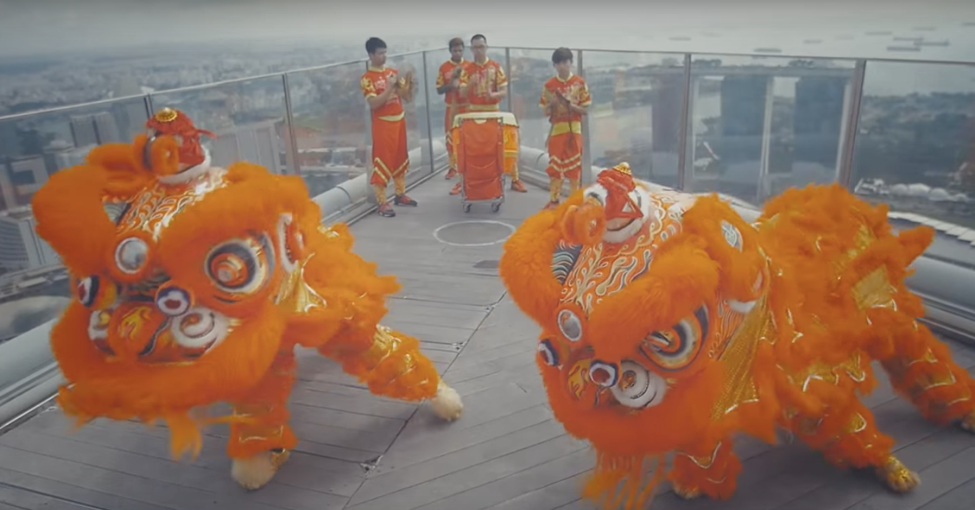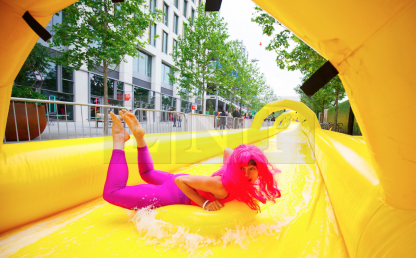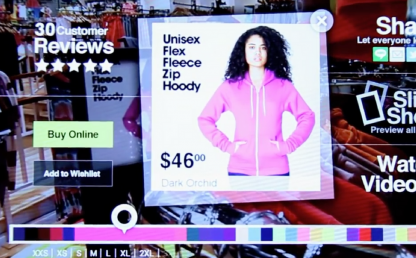5 Innovative Digital Marketing Campaigns for Chinese New Year

With the Chinese New Year right around the corner (January 28th), businesses have the opportunity to reach and engage their audiences in creative ways. CNY is the biggest celebration in Asia, spreading outside of mainland China to Hong Kong, Singapore, Vietnam, Malaysia, and beyond.
Marketers use this event to reach out and wish customers luck, happiness, and prosperity, but also capitalise on it to engage customers, build relationships, and drive revenue. For big holiday celebrations like this, brands need to ask how they can stand out and associate their brand with the core values of the holiday. With these goals in mind, let’s look at five great examples of Chinese New Year digital marketing campaigns driven in Asia last year.
1. Blippar Singapore - “Happy Lunar from Blippar” - Augmented Reality Campaign
Blippar is a company that helps brands to create augmented reality experiences on mobile devices. Their app allows you to use your phone’s camera to scan items in the world around you, and it reveals various surprises like games, animations, and deals. For the 2016 Lunar New Year, Blippar developed custom ‘ang paos’ for consumers to give to friends and family members. When the ‘ang paos’ are scanned using the Blippar app, they reveal a lion dance animation and a fortune depending on your year of birth.
This Chinese New Year campaign is playful and innovative. It connects well to the event, features the new trending augmented reality technology, and uses that technology in a way that gets people involved. Blippar took a common tradition of the Chinese New Year, added a fun modern twist, and did it in a way that promotes the use of their product. About 2,000 of these ‘ang paos’ were created for the holiday, and this encouraged people to download the app and get involved.
2. Uber – Lion Dance on demand
Uber also used a creative strategy to connect with consumers during the Chinese New Year. In cities around China and in Singapore, customers could use the Uber app to call for a real life lion dance at their location. They made a simple service that you could use, similar to how you would call for a ride using the app, and the user would be billed for the dance using their Uber account.
This campaign resonated with audiences because it provided users of the app with an easy and fun opportunity to celebrate the holiday in a traditional way. The lion dance is a popular and key element in festivities and is said to bring good luck. Many businesses are known to order the dance in hopes of good fortune in the coming year.
Making it twice as clever, Uber focused the campaign on the user experience and the holiday, pushing the service as an advertisement. This campaign worked because it took an element of Chinese culture, made it accessible through an on-demand experience, and it had people using the app to engage in the Chinese New Year campaign.
3. Ensemble Enables Malaysians to Give Back to Their Communities
Ensemble is a company that specializes in using the consumer experience for marketing. As a Chinese New Year Campaign, they partnered with Maxis, a Malaysian telecom company, to provide consumers with the opportunity to give back while they were using popular online shopping platforms.
Known as the “Kongsi Home project,” they integrated the purchasing of building supplies into the online shopping experience. The supplies would then be donated to a charity that builds homes for underprivileged families.
This campaign worked because it integrated the experience into something that Malaysians already do and it hit the mark when it comes to understanding the values of the Chinese New Year. Sharing and giving are a major part of the tradition and providing users with the opportunity to help their less fortunate countrymen is an effective way to build goodwill. Not only that, it focuses on the charity instead of the sale.
4. Tiger Beer for the Chinese New Year
As one of the most iconic Asian beers, Tiger Beer decided it was time to bring the Chinese New Year to an audience beyond Asia. With their “Say it with Tiger” campaign, they created a microsite with a greeting generator where users throughout the world had the opportunity to create, reply, and share custom greetings for the Chinese New Year.
The campaign incorporated the use of several social media platforms including Instagram, Weibo, and Wechat, and it expanded the reach of the promotion by using the involvement of several popular celebrities. The stars would share videos of themselves trying to do their best authentic Chinese greetings.
This campaign caught on, not only having success in Asia, but in countries throughout the world. It was a smart approach because they used multiple channels including digital, retail, and social media to generate interest. Additionally, they took the simple idea of a New Year greeting and used it to get users involved while promoting the brand.
5. Burberry’s Happy Lunar New Year
As a popular brand for fashion and luxury goods, Burberry found a way to offer a Chinese New Year experience that highlighted some of their products to their audience in China. Using WeChat, users could shake, swipe, and tap on their phones to unwrap a variety of digital presents. After unwrapping the gifts, they could send digital envelopes to friends and family members. Chinese users were also offered a chance to win one of Burberry's Lunar New Year prizes when they participated.
The brand did well with this campaign because they wisely chose to use the most popular messaging app in China, WeChat, and they connected the campaign to the holiday with the idea of gifts and digital “lai-see” (ang pao) envelopes. As a further point, it not only worked as a way to connect customers to their brand, but they also used the digital gift unwrapping as a smart way to showcase some of their products.
Are you ready to plan for upcoming holidays?
Cultural celebrations like the Chinese New Year present great opportunities to launch fun and engaging marketing campaigns that will resonate with your customers. As you can see, doing so requires understanding the holiday, how it is celebrated, and why it's important to the culture.
It’s also smart to take advantage of innovative new technologies that your customers are using. Then, you have to get creative and see how your brand can integrate the holiday into your marketing. Hopefully, these 5 examples have given you some inspiration. If you still have questions, give us a call and we can help you ensure your next holiday campaign is on target!
 Insights
Insights

